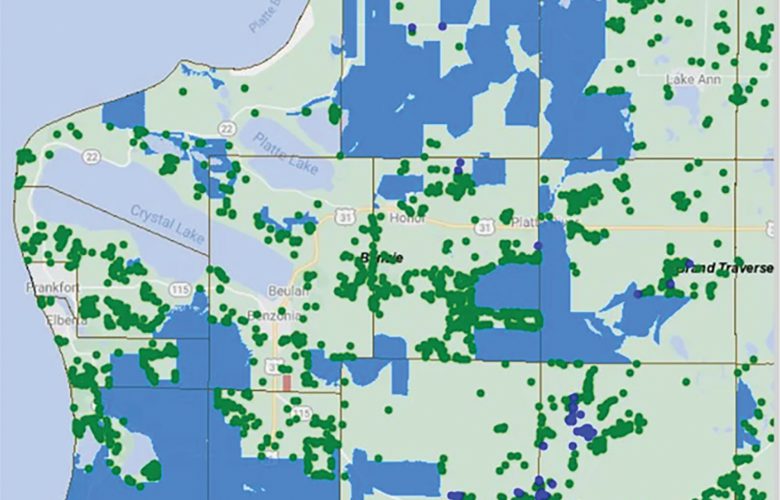One decoy at a time
By Emily Cook
Current Contributor
Alongside a stand of towering red pines is Dave Kober’s workshop, an artist’s sanctuary which he built himself in 2019, despite being in his eighties. His property, west of Thompsonville, is serene on the hot summer day of my visit—you would never know that the coastal towns of Benzie are in peak tourist season. The location is perfect for the avid fisherman and hunter. With the Platte River in one direction and the Betsie in the other, inspiration for this artist is just a short drive away.
Kober carves and paints fish decoys. He has for decades, though only for two years at this current location.
“I used to be near Cadillac, right off of M-115. I built a home and had property,” he begins. “But I was almost too visible. It got to the point where I couldn’t get any work done; there was too much traffic coming into my shop.”
At that point, he was becoming well known for this rare type of folk art that not many people do. Due to a desire to be a bit more “off the beaten track”—and closer to their adult children and grandchildren who live and work near Traverse City—Kober and his wife purchased the home and property where they currently reside.
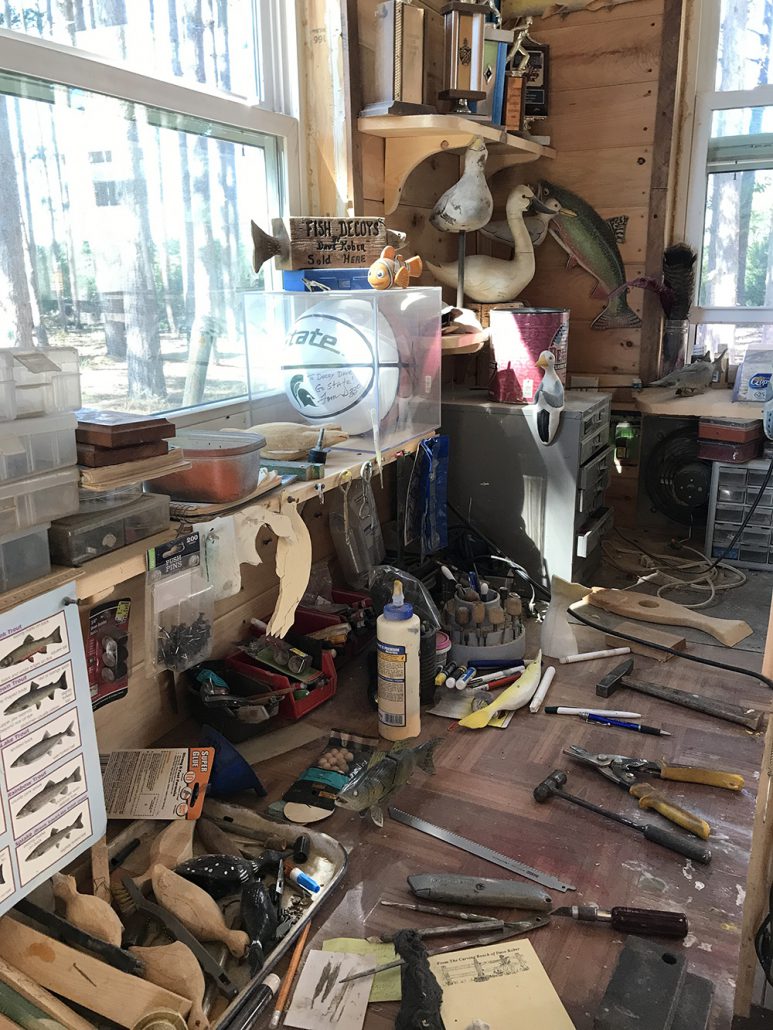
In Kober’s workshop, it is hard for the eyes to settle on just one thing. Nearly every surface is covered. To the right of the front door are some samples of his work—some decoys in process, mostly fish, but also a small hanging polar bear that he made just for fun. Kober makes sure that I spin it around to see how cute the paws are.
Ahead to my left is a case with a basketball, signed by Tom Izzo. The well-known Michigan State University coach gifted the ball as a “thank you” for a decoy he had commissioned from Kober several years ago; it is extra special because MSU is Kober’s alma mater, where he established an interest in conservation that led to him going on to conduct environmental clean-ups for a number of years.
On shelves, lining the top of each wall, finished decoys are on display. The species range from fish local to Northern Michigan to other, more exotic fish that could be found in tropical ecosystems. There is even an invasive carp, a surprisingly common request because of how unique they look. The colors on each are stunning.

“You know, I’m partly color-blind,” Kober slips in.
My jaw drops a little.
“I reproduce what I see,” he says. “I go out and catch a pumpkinseed or a walleye and come home and paint it. Just don’t ask me what colors I’m using,”
Talking to Kober is easy. It reminds me of the conversations I used to have with my grandfather, when he was alive. Perhaps that is because Kober grew up downstate near Sparta, not too far from my own original home of Ionia. When I mention this, he directs me to a photo hanging on one of the walls.
“That picture was taken at the Ionia Free Fair,” says Kober. And there he stands, a younger version of this man, holding the halter of one of his family’s purebred calves in one of the same 4-H buildings that I frequented as an animal-obsessed kid. A handful of years later, he tells me, one of those same calves helped to pay his way through college.

Below the picture is a display case, and—reflecting on my time with Kober later—I think it might be one of my favorite features of his shop. Each shelf shows a different generation of wood carvings and decoys done by family members. The top shelf belongs to his grandfather, his mother’s father. The second row is lined with decoys by his uncle.
“He was really instrumental in me getting started in this work,” Kober says. “He fully encouraged me along the way.”
The third shelf, of course, belongs to Kober himself. Below his decoys, you see the ones made by his son. And the bottom shelf? His grandson’s impressive work is on display. Five generations of decoy carvers.
The process of carving means something a little different for everybody. For years, it was simply a hobby for Kober, a stress reliever. After college and into his adult life, while he was doing environmental work for his “day job,” he would often find himself on the road. He would travel with a tackle box full of essential tools and a piece of wood, whittling in motel rooms.
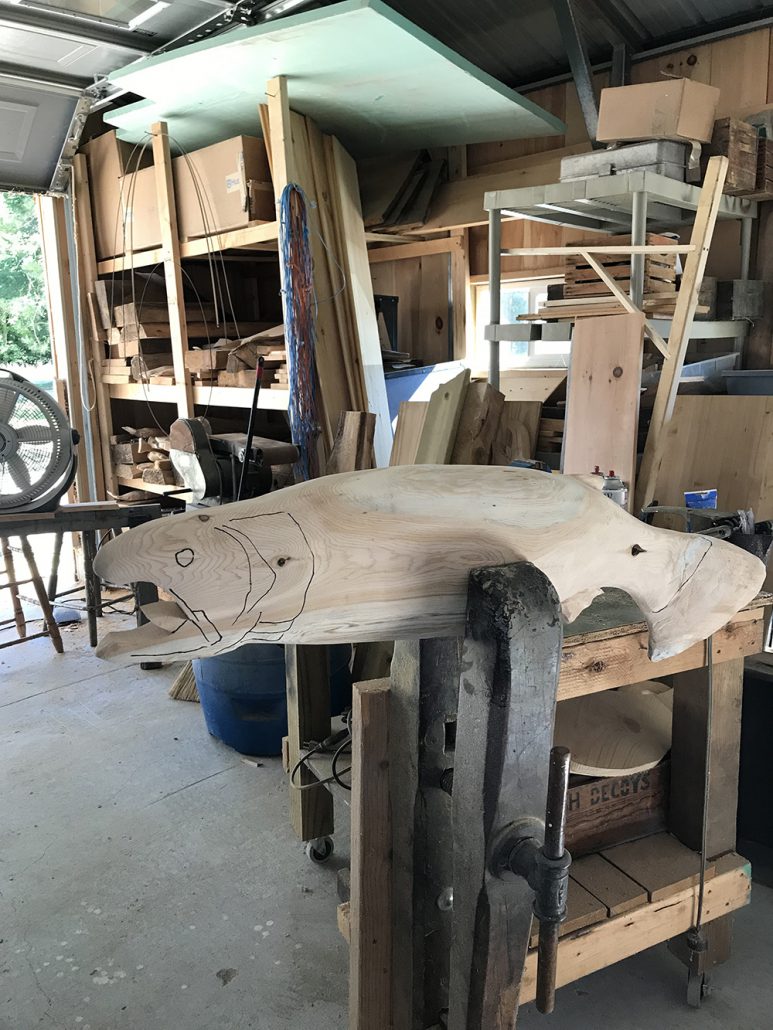
Things changed in 1990 when he won the Michigan Heritage Award, honored for carrying on a family tradition. The award means a lot to Kober and marked a turning point, a shift toward a craft that became more than a hobby. He began to receive more and more orders, while simultaneously taking part in shows across the Midwest, including Minnesota and Wisconsin.
“And now, ‘catch and release’ is a big thing,” Kober says. “People catch a beautiful fish, photograph it, and throw it back. Then they send me the picture, and I make a decoy for them.”
From a biodiversity standpoint, it is a win-win. Native fish populations remain healthier when more individuals can remain in the ecosystem to reproduce—and one can still have a look-alike to display in their home, rather than the real thing mounted on their wall.
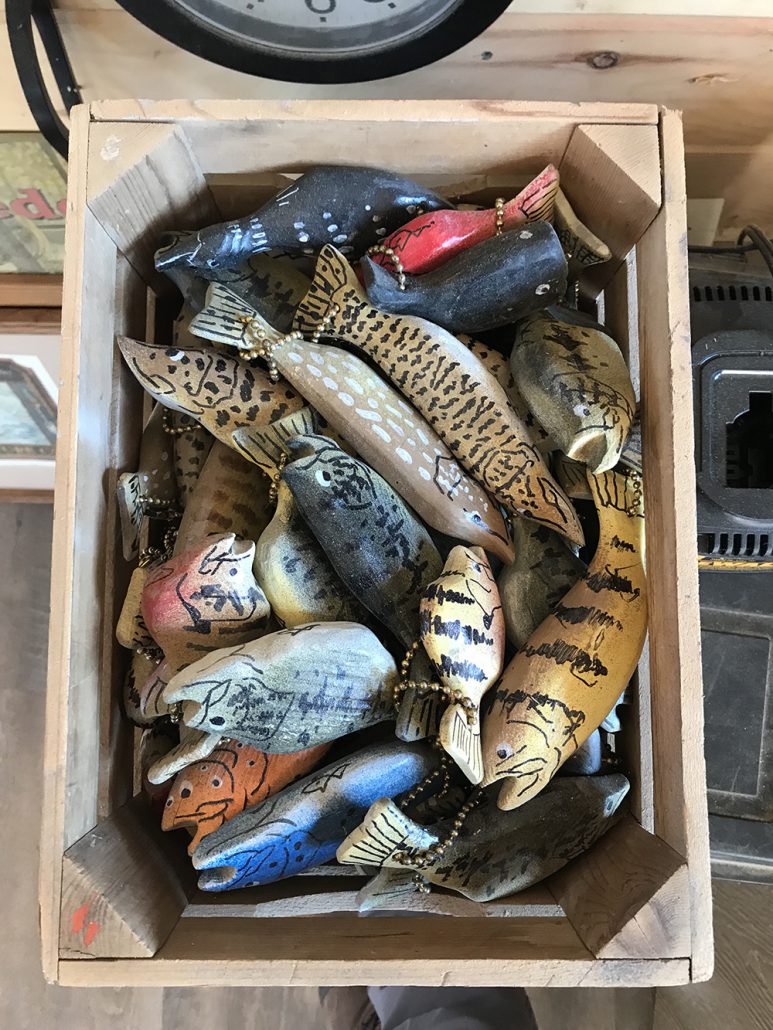
In this case, however, it is made out of wood—Kober prefers to use white cedar, almost exclusively—and it will last nearly forever, if given the proper care. All of Kober’s works are unique, and each can sell for several hundred dollars.
He points to a large salmon decoy perched upon his workbench.
“That one was caught off of Ludington and is all set. It’s getting picked up this weekend,” Kober says.
It took him about three weeks to finish this piece, with several full days to complete the hand-painted portion. Arthritis slows Kober down now, but only a little. He works in three- to four-hour blocks of time before giving his hands a break and picking a project up again later.
We step into the second large space of his workshop, the big room where the initial work takes place. I spot a decoy in the early stages of carving that has been clamped into a vice, and it is just starting to take form. There are drawers full of smaller, finished fish, like the Arctic grayling. Boxes for shipping finished works are stacked to the ceiling, although customers have to pick up the really large decoys.
Kober starts flipping through some large frames on display along one wall. They are stories that have been written about him throughout the years. I see a story in The Grand Rapids Press and another headline from The Detroit News. There are numerous highlights from regional papers, and then he stops on one of his favorites—a tiny, little cut-out from the classifieds in The New York Times; a collector had placed an ad looking for Kober’s decoys.
Kober is supremely humble, but I can tell that he is also proud. As he should be. His carvings are desired nationally. Despite this, it is clear that he is perhaps most honored to be carrying on a tradition, introduced by his grandfather and now being carried forward by his grandson. The decoys he picks up to show me are not necessarily the shiniest and largest specimens—but, rather, it is the small decoy that he carved when he was 10 or 11 years old. Or it is the one where he won a bet when challenged to carve a decoy that made nearly a full circle.
“I won a hundred bucks with that guy,” Kober beams as he holds up a small fish that loops around, its head nearly touching the tail.
Everything in his shop has a place. Every surface may be covered, but it is all organized and intentionally placed. The items feel curated and loved.
Kober remembers getting a phone call at one point in his carving career.
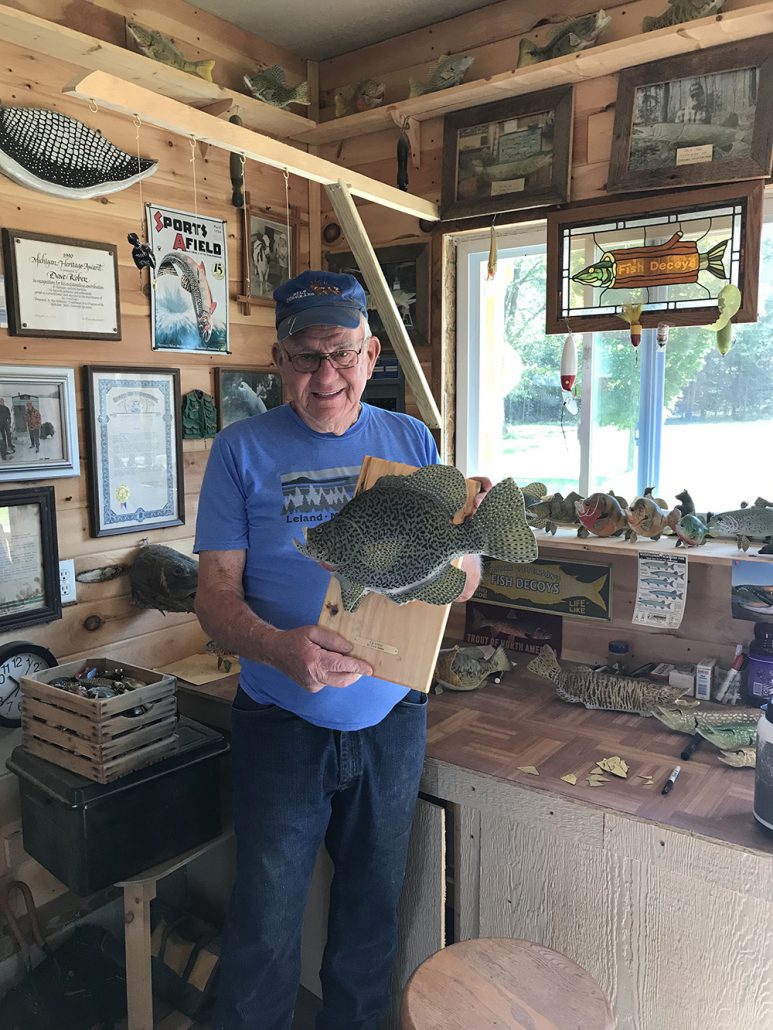
“A squeaky little voice asked me if I had ever heard of Gwen Frostic. Well, of course I had,” he says.
It turns out that the little voice belonged to Gwen Frostic herself. She asked Kober to meet her for coffee, and they talked about his painting, which she was actually quite critical of. She went on to help him with his merchandising and would ask him to report back to her after he attended a show.
“She would grumble a bit about how I painted things, but then I got to tell her, ‘Hey, I sold out!’” he laughs at that memory, acknowledging that people simply like different things.
As I am about to walk out the door, he shows me his next project. It is a photograph of a fish that a woman spotted in Hawaii.
“I don’t plan to stop anytime soon,” Kober says. “Once you stop moving, you never start again.”
To learn more about Dave Kober and his decoys, email Dave@KoberDecoys.com or visit KoberDecoys.com for more information.
Featured Photo Caption: Dave Kober is a folk artist who carves and paints wooden fish decoys at his workshop. Photo by Emily Cook.




